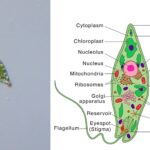‘Both a short day plant and a long day plant can produce can flower simultaneously in a given place’. Explain.
‘Both a short day plant and a long day plant can produce can flower simultaneously in a given place’. Explain.
Please login to submit an answer.
Photoperiodism governs flowering: short-day plants (SDPs) flower when day length is below their critical maximum, while long-day plants (LDPs) flower only above their critical minimum
Each species has a distinct critical photoperiod—e.g., Xanthium (SDP) flowers if daylength is shorter than ~15.6 h; Henbane (LDP) flowers when daylength exceeds ~11 h
If the local daylength falls within the overlap between these two critical ranges (for instance, 11 to 15.6 hours), both SDP and LDP will receive their respective required conditions simultaneously, leading them to flower together
In practical terms, when the natural photoperiod in a given location is intermediate—say, 12–14 hours—it is “adequate” for both types:
SDP sees day length ≤ its critical value and flowers
LDP sees day length ≥ its critical value and also flowers
Thus, without altering light or using artificial manipulation, both short-day and long-day plants can flower simultaneously if the ambient photoperiod coincidentally meets both their thresholds.
- Share on Facebook
- Share on Twitter
- Share on LinkedIn
Helpful: 0%




